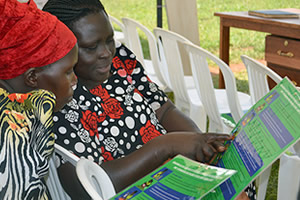Dis-Abling Environments for M&E: Part 2

A couple of weeks ago Scott posted a blog about dis-abling environments for M&E and we have some great examples. Johnpierre made several good points:
- The organizational structure and understandings, in his experience, have a significant impact on the performance of M&E
- When M&E is exclusively project based, there tends to be no organization-wide policy. This leads to confusion regarding the indicators to be collected and additional work for those who are collecting and managing the data. It also responds to donor needs rather than organizational needs.
- Consultants with fancy degrees and long term experience in the field tend to devalue local wisdom. This has been true for years in the international development field. In order to turn the paradigm around, it is necessary to start here. Empowering communities and M&E staff requires that we listen to them and build on what they know rather than imposing structures on them that may be workable and may not.
Prior to Scott’s blog, Juliana made a point that in her organization, M&E is “at the bottom of importance in project implementation.”
What these two members of the community have highlighted are seriously disabling factors in their environment and all of them are related to organizational development. When you work in a disorganized or “illogical” workplace that is focused on aspects of a project other than your area of expertise you begin to feel that you and your work are devalued – just not important. When the local people – those in the community and those in the organizational system are discounted by others, especially consultants and others who are purportedly there to help them, they feel dis-empowered.
In both cases the dis-abling environment can lead to confusion, de-motivation and poor quality of results.
The good news is that it needn’t be this way. There are organizational development tools that can assist you in turning these situations around. Johnpierre specifically references his organization’s development of governance tools as well as a strategic plan as first steps in this process and we have asked him to give us more information about the wisdom that exists at the community level, and all levels in the organization, that has been overlooked by consultants. See his response in CEEME community of LeaderNet.
Juliana is in a particularly difficult place. How would you address her challenge and how would you use the leading, managing and governing practices you already know?
Susan




Responses